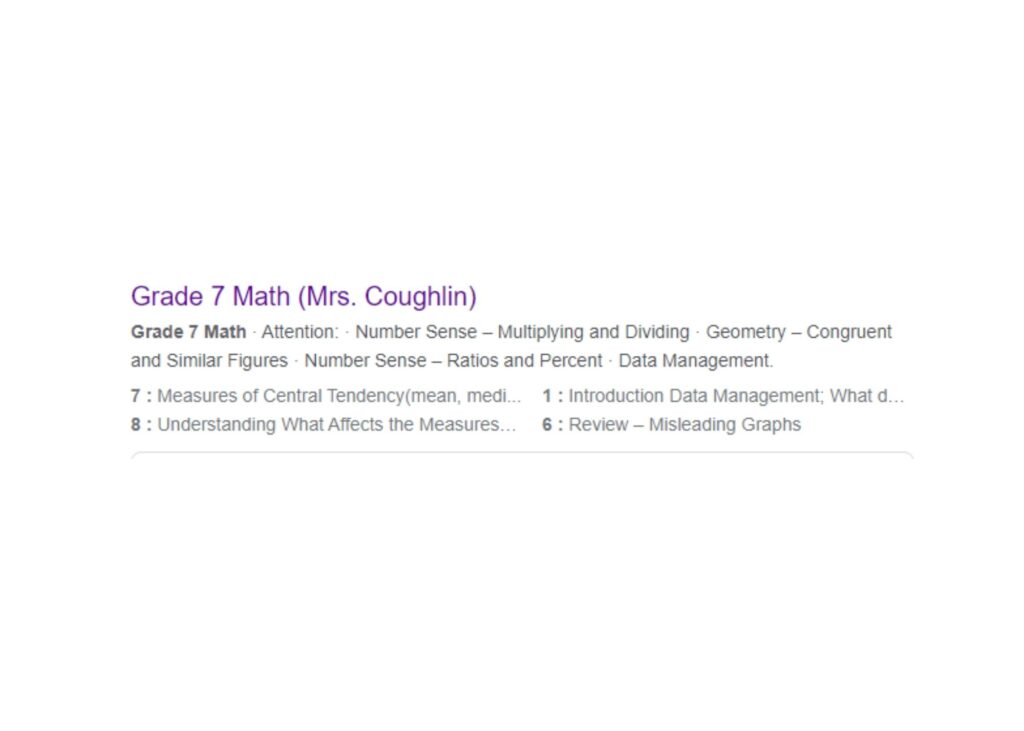Due to school interruptions throughout the covid-19 crisis, many students will no doubt have gaps in their knowledge and understanding of mathematical concepts. Filling the gaps in math is important, but the process should not cause panic or anxiety.
In this blog post we will share how teachers and parents can help students catch up and ensure they are on track for the next school year.
Know what the child is expected to know
In order to identify what the child has missed and needs to know in order to be successful in the upcoming year, it would help to review the program of the grade that the student is going into.
Usually, though, the curriculum documents are rather lengthy and it is easy to get lost in the amount of information. For the purpose of identifying the topics to be studied, a simpler life hack would do.
Enter grade, jurisdiction and subject in your browser:

Click “Enter” and start scanning the results.
Scroll until you see a webpage of a teacher teaching that grade within the specified jurisdiction, like this one, for example:

Teacher webpages usually have a list of units/topics/lessons covered in that grade.
We do not recommend using any resources without permission, however, the above method will help you get a very quick and clear idea of what the student needs to know now and what the student will be expected to know in the upcoming year instead of going through pages of curriculum documents.
Talk to the child, try to understand what the student recognizes and what math topics from he list cause difficulty.
Once the gaps have been established, start planning.
Start with fundamental concepts
Due to school disruptions, the amount of gaps in children’s knowledge of mathematical concepts can be overwhelming.
Good news is, focusing on the fundamental concepts first, would help a child grasp more complex topics faster with less effort on their (and your) part.
So, start with reviewing what types of numbers exit (natural, whole, real, etc). Then, depending on the grade, move on to understanding fractions. Talk about why a denominator cannot be “0”; discuss what an improper fraction is; do operations with fractions and discuss examples of using fractions in real life situations. This will naturally lead to the concepts of rates and proportions.
Next, review integers, operations with integers and using integers in real life situations.
Continue with exponents and roots.
Then, some algebra of course: discuss the concept of variables, talk about equations, solve some equations and graph them (depending on the grade, the relations/functions could vary).
After that, proceed with some geometry and trigonometry. Talk about area and perimeter. Review triangles and their properties.
Finally, finish with basic probability and statistics terminology and concepts (scatter plots, trends, survey, bias, etc).
Offer a child to complete short, interactive quizzes to practice these concepts without getting overwhelmed.
Make a plan and differentiate learning
It is difficult to establish a new routine and stick to it, but it is crucial if you want to achieve success with filling the gaps in math.
Make a weekly plan, discuss it with your child and make sure the child buys into it.
Dedicate an hour a day to working on the concepts the student needs to know in order to be successful in math in the upcoming year.
Print it or write it out on a sheet of paper and post it in a visible spot so that it serves as a reminder to complete that day’s set of activities.
Use a variety of resources and tools to engage a child in learning.
For example, they could start by watching a short video lesson. Then, they could do some pencil and paper work. After that, the material could be consolidated by an interactive game on the topic or an online whiteboard activity (you can quickly modify a template to match the topic that you need to cover).
At this day and age there are myriads of ways to make learning differentiated and fun. It does not have to be tedious and boring.
Stick with the plan, be consistent and award your child weekly for progressing in math.
Observe and enjoy subsequent success
Consistency, diligence and enthusiasm pay off. After a few weeks of filling the gaps, the results will become more and more obvious.
The child will have more confidence with math, will be able to apply and expand their knowledge. Proficiency with fundamental concepts will serve as a foundation for more complex ideas and applications.

One thought on “Filling The Gaps In Math: Post-COVID”